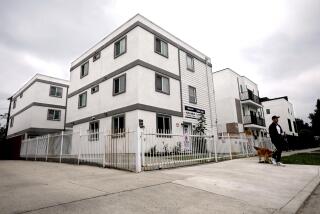Column: One man’s quest to document the Westside’s homeless and hold officials accountable
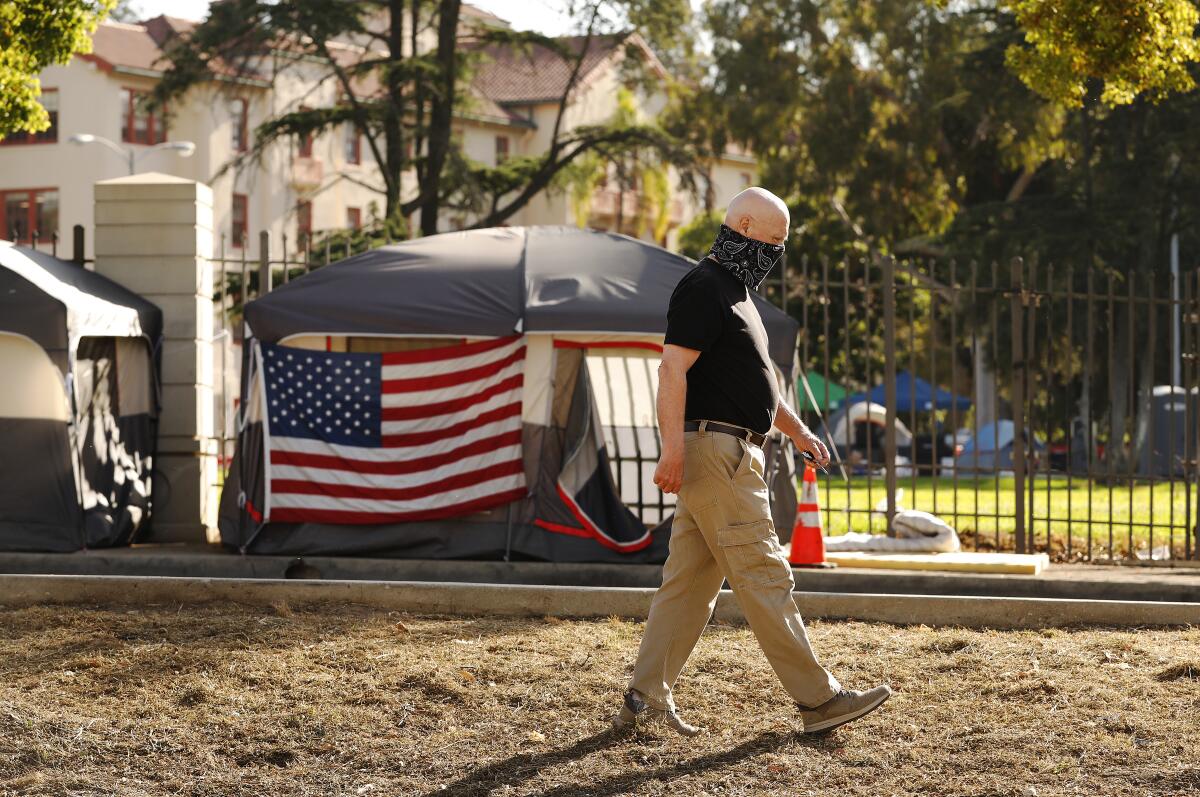
- Share via
Every morning in West Los Angeles, 73-year-old Don Wood circles his neighborhood in a Chevy Spark, checking out homeless encampments and taking an occasional photograph. When he gets home, he sends a photo or two to local officials and to members of a Westside task force looking for solutions to homelessness.
“Simultaneously beautiful and dangerous,” Wood messaged one day, attaching a stark image in which he had turned nine separate shots into a panorama of tents under the 405 Freeway on Venice Boulevard.
I joined Wood on his 36th straight day of monitoring, and then hooked up again with him last Thursday, Day 43 of the Don Patrol.
Why does he do this?
At the start of the coronavirus pandemic, when he feared the disease would spread through homeless encampments and beyond, making it more critical than ever to get people safely indoors as soon as possible, he noticed that a lot of people on the streets weren’t social distancing or wearing masks.
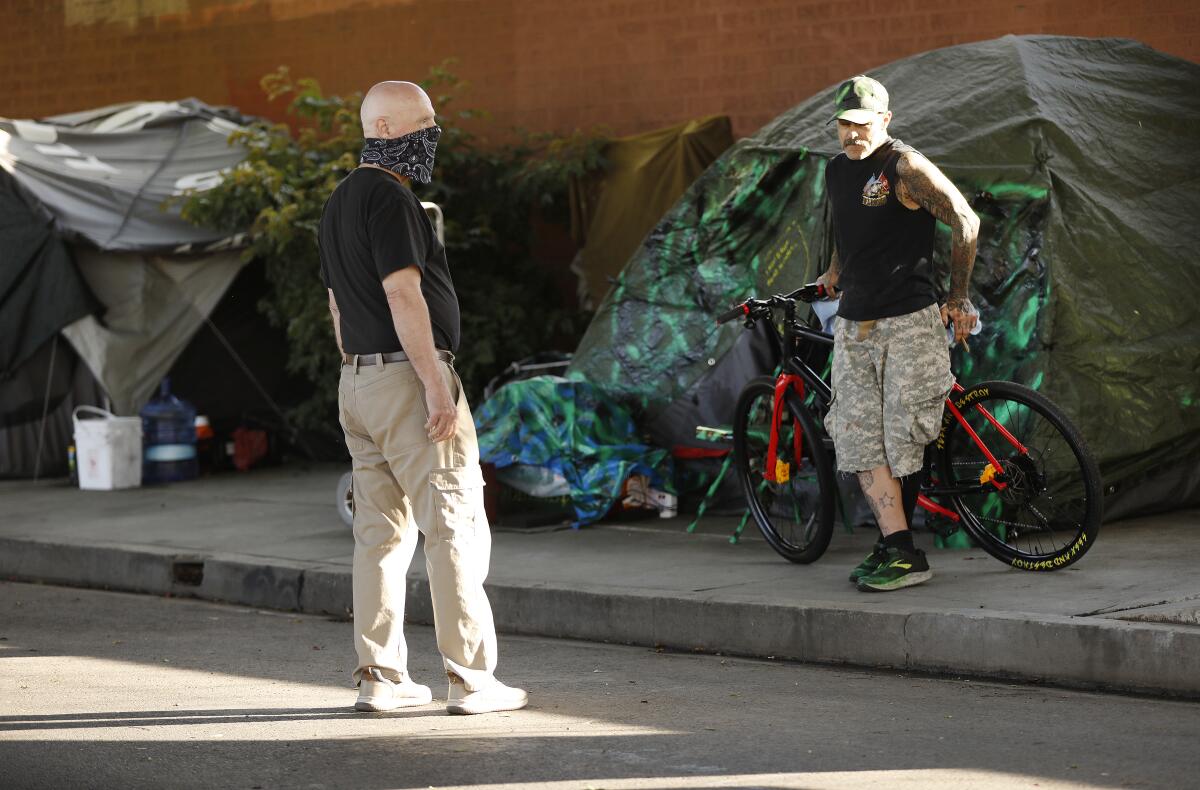
“I took the governor and mayor at their word when they said it was dangerous … and we had to do something about it,” Wood said. “I started going around to watch that metamorphosis happen. And it hasn’t.”
The first time I met up with Wood, we started on Sepulveda Boulevard under the 10 Freeway. At 7 a.m., a dozen or so tents lined the east side of Sepulveda, and Wood said the population had been constant for months, no more tents and no fewer tents.
I followed behind him in my car as we talked by phone about what he was seeing. When we got to his second stop, under the freeway on Military Avenue, he reported good news.
“That’s much cleaner,” he said, spotting only three tents instead of the usual dozen or so. “They were in here cheek to jowl.”
But there was little change on the rest of his route, which takes him about 45 minutes each day and concludes with stops at the West Los Angeles VA and the Westwood Rec Center.
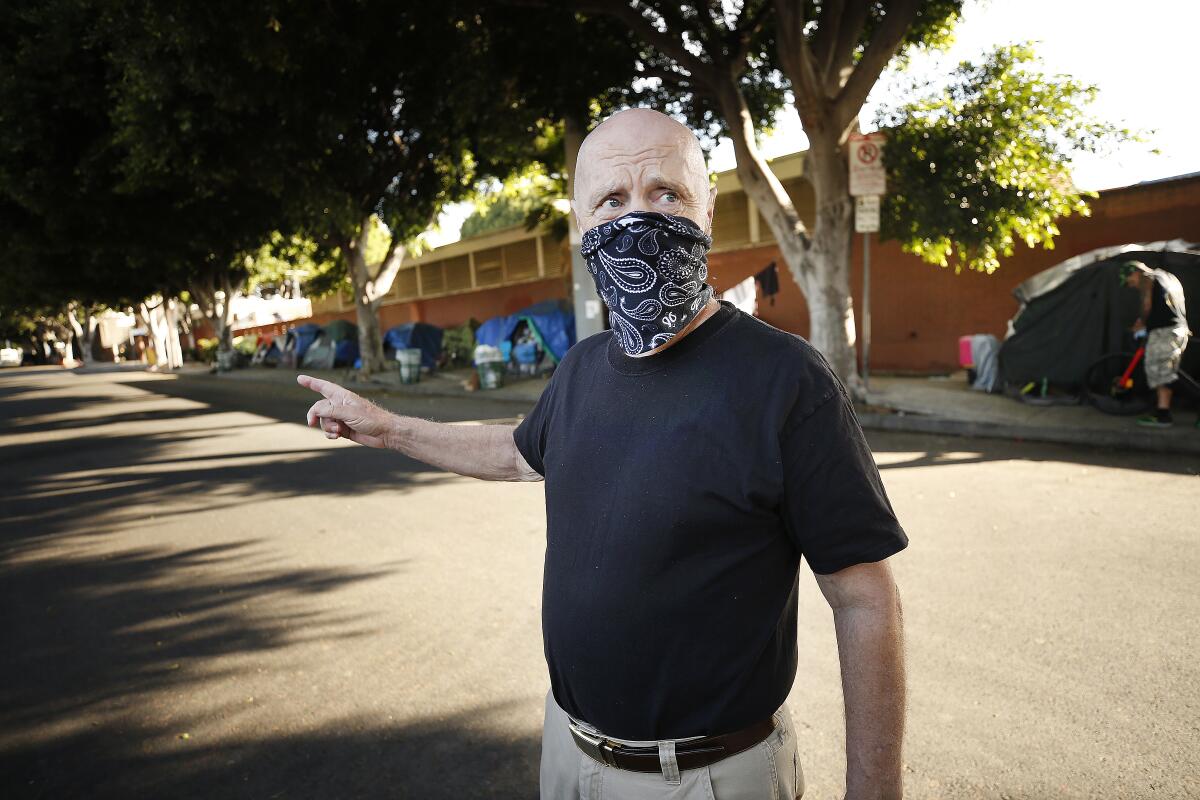
On Day 34, he explained that more tents had been set up on the fringe of the VA and just inside the fence, with toilets available and case managers on site. On Day 43, roughly 25 trailers were parked at the Westwood Rec Center and homeless people were being moved into them.
But otherwise, Wood estimated, the population of people living in the encampments he checks on daily is virtually unchanged. And that’s consistent with recent news about slow going on countywide efforts to move people indoors.
L.A. County officials set a goal of moving 15,000 of the county’s 60,000 or so homeless people into largely empty hotels and motels through local implementation of the state’s Project Roomkey. That’s the rough number of homeless people 65 and older who have health conditions making them more likely to die if infected with the virus.
But as of last week, one month into the project, tracking by The Times found that fewer than 2,000 people had been moved inside. The effort has been sabotaged by NIMBY resistance from some cities, lack of cooperation by many hotel managers even though their rooms are empty, and complications in working out contract, insurance and liability details. Homeless advocates have been so ticked off that they’ve lashed out at local officials and waged protests threatening to seize hotels.
Heidi Marston, interim director of the Los Angeles Homeless Services Authority, acknowledged the complications but tried to put a positive spin on things. She said that as of Thursday, 1,776 people had moved into hotels and motels (a number that has climbed a bit since then), with hundreds more new leases being finalized, and roughly 1,000 more had been moved into rec centers — such as the Westwood Rec Center — and trailers.
“It’s more than we could have dreamed of doing in 30 days,” she said, “but we have to keep going.”
Marston said that getting people indoors is just one goal. Another is trying to connect them to long-term housing options before 90-day contracts with hotels run out at the end of June.
“We can’t open the doors to the hotels and motels and say OK, go back out on the street and we’ll work with you later,” Marston said.
With tens of thousands of empty hotel rooms in greater Los Angeles, it’s hard to imagine why more properties in more cities haven’t either stepped up voluntarily or been coerced or shamed into doing so. Participating hotels are being compensated, they’re able to bring furloughed employees back to work, and they’re aiding some of the most vulnerable people in society while also helping limit the spread of the virus.
And what about other housing options? While talking to Marston, I noted that tens of thousands of dorm rooms are vacant now because college campuses have been shut down and might not reopen in the fall. Why not recruit college leaders — especially those at taxpayer-funded public universities — to open their doors for temporary homeless housing?
Marston said the idea has come up but hasn’t yet been pursued.
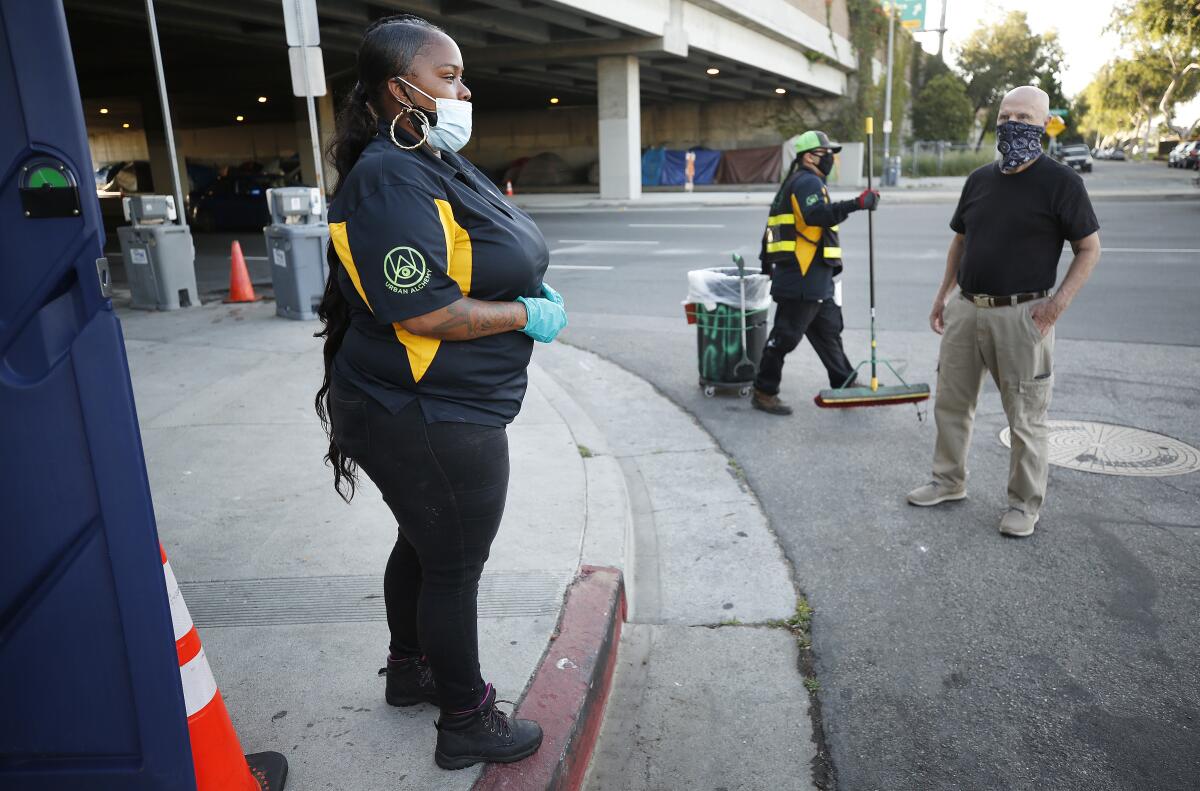
Wood, a Canadian who moved south 20 years ago, said he’s long been the kind of guy who gets involved in civic causes. Frustration, impatience and a refusal to accept that massive numbers of homeless encampments should exist in such a wealthy country motivated him to try to be a part of the solution.
He signed on early this year to a fledgling task force that was spun off from the Westside Neighborhood Council to work with local officials and possibly contract with a service provider. He knows that some homeless people, due to mental illness or addiction, can be difficult to help. But he hasn’t personally seen the level of effort he thinks is necessary, and he wonders about things such as why some encampments have bathrooms and hand-washing stations while others don’t.
Mary Williams, another member of the task force, said the West Side has its NIMBYs and its YIMBYs, and their group is trying to inject fact-based data into the conversation. Wood has taken it upon himself to monitor and record developments on the streets.
On Day 43, Wood stopped on Venice under the 405, where about 100 people are living. Lameisha Randall, who works for an L.A. service and maintenance crew called Pit Stop, was scrubbing and setting up portable toilets and wash basins when I asked her about Wood’s daily visits.
“I think he comes because he’s concerned and he’s trying to help the community,” Randall said, adding that Wood sometimes delivers clothing or personal hygiene supplies.
At another encampment, Tim Walker, wearing a U.S. Marine shirt and repairing a bicycle outside his tent, said he’d been the recipient of breakfast sandwiches handed out by Wood. Walker said social workers came by recently, asking if anyone had underlying health issues.
“Pretty much everyone out here’s got underlying health issues,” said Walker, who told me he has severe PTSD and multiple physical problems. He added that he and others wouldn’t necessarily trust offers of temporary hotel rooms, or consider them any safer than their tents, although he’d be ready to talk about a more permanent housing solution.
I told Walker that several months ago, just around the corner from his tent, I’d watched the coroner remove the body of a homeless man who died on the street.
“I can’t even tell you how many dead bodies I’ve seen in sleeping bags over the years,” Walker said.
Wood shudders to think, as do I, about whether the situation on the streets will get worse rather than better. With so many people thrown out of work, and government service budgets sure to be severely slashed, there’s no telling how many more people will end up homeless.
Wood said he’d like to relax at home in the morning, but as long as neighbors all around him sleep on the pavement, he’ll keep up his daily rounds and continue to send out emails, whether anyone responds to them or not. He said he lives by two philosophies.
“One is do unto others, the golden rule,” he said. “The other is that I’d rather be damned for doing than damned for not.”
More to Read
Sign up for Essential California
The most important California stories and recommendations in your inbox every morning.
You may occasionally receive promotional content from the Los Angeles Times.

